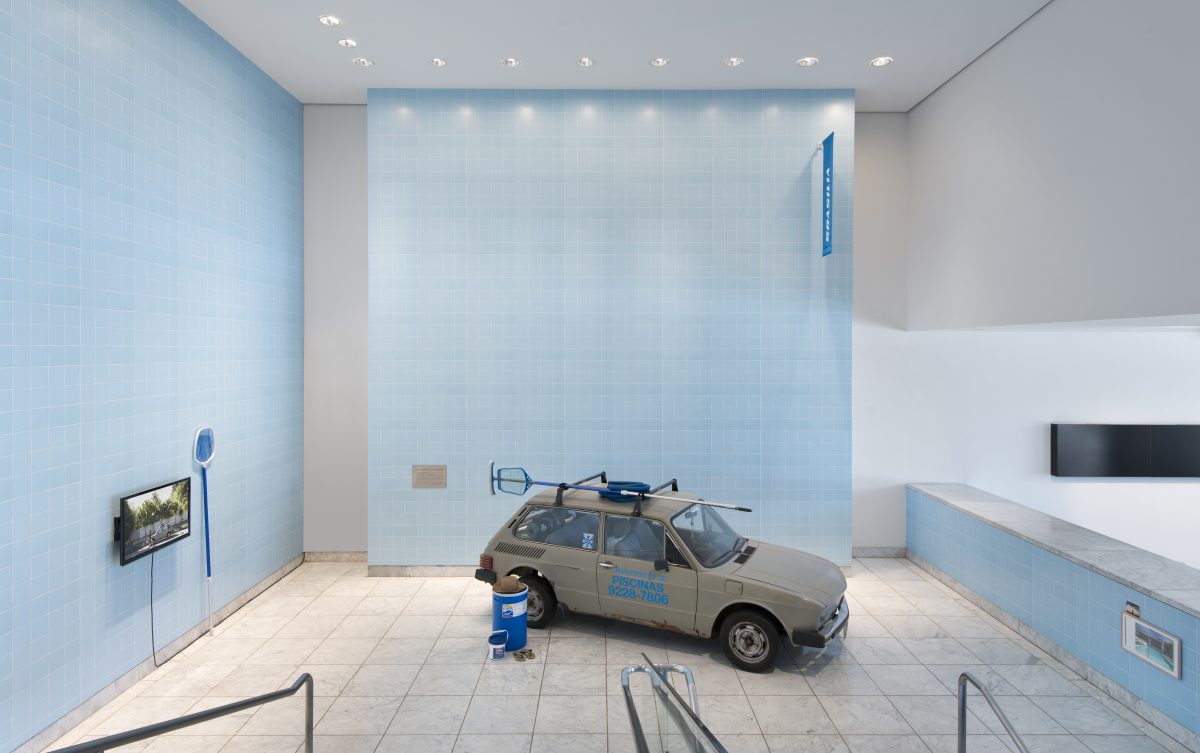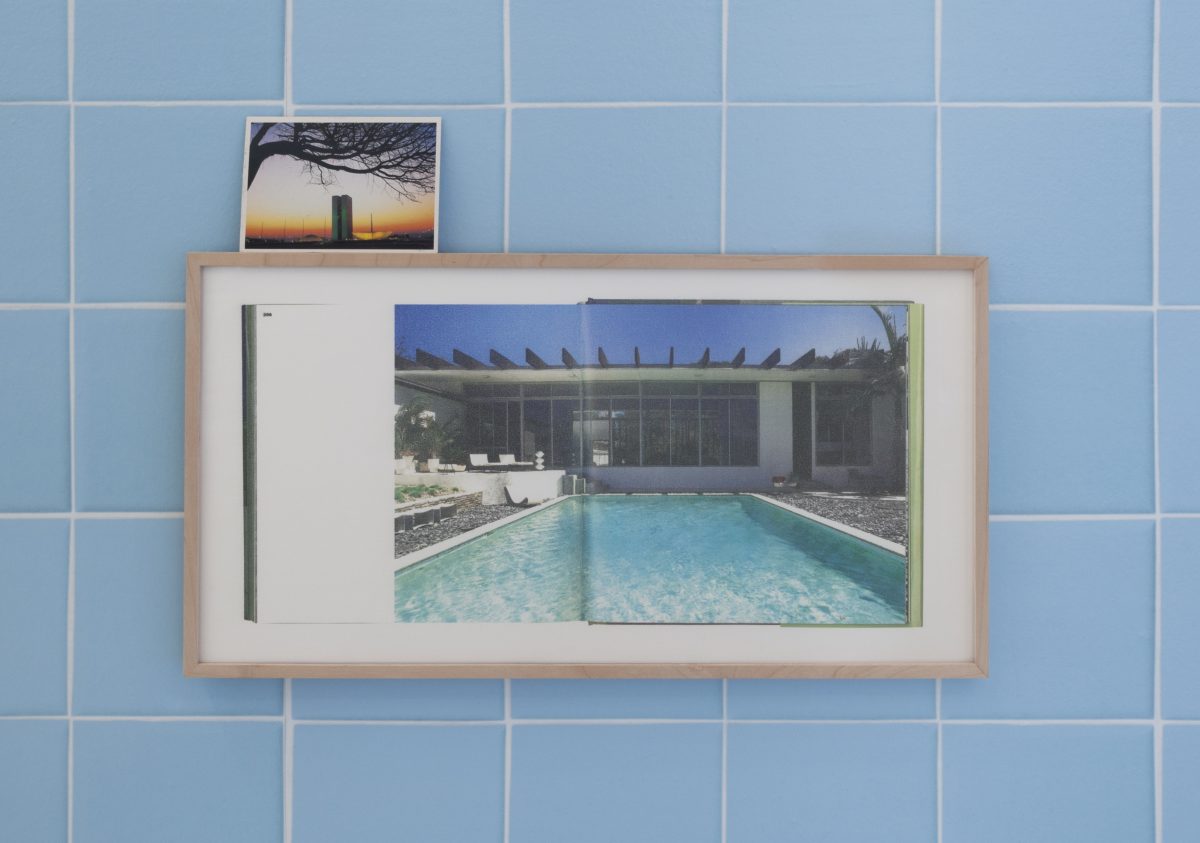
- This event has passed.
Clarissa Tossin: Brasília, Cars, Pools and Other Modernities
During her stay at the Artpace residency, Clarissa Tossin has deepened and realized a long-term project that summarizes her commitment to the process of development and circulation of the new modernity, “Brasília, Cars, Pools and Other Modernities”. This complex multimedia installation, with documents, a car, a video and other elements, presents the outcome of an ongoing investigation and intervention to demonstrate the complication of the travel of the “Brazilian modernity” to the US and the misunderstandings between two societies in which modernity signifies very different meanings. Tossin, settling in Los Angeles, discovered the only building in the US designed by Oscar Niemeyer, the father of Brazilian modernity, a communist who believed modernist architecture could provide the ideal home for a new society founded upon the interest of the working class. However, this house, located in Santa Monica, commissioned by a wealthy American family, was designed and built only through correspondent letters between the architect and the client because Niemeyer was not allowed to travel to the US due to his communist background. This story was further complicated by the fact the new owner of the house refused any public access to this historically important house. Tossin, therefore, decided to carry out a performative action to test the ground. She turned herself into a pool cleaner, driving a Volkwagen – a model designed and produced in Brazil as the symbol of Brazil’s modern industrial success and democratization of car culture – from Brasilia to Los Angeres, namely from the Brazilian capital of car culture, or the ideal image of modernist city, to Los Angeles, the American car capital, in order to come to clean the pool of this (in)famous Niemeyer designed house.
The project has been realized through great efforts of investigation and endurance in the search of actual “props” such as the old Volkswagen car and the Niemeyer building itself, and of course, the history behind them. Particularly remarkable is that, understanding the complexity and contradictions of the historical facts and significance of both Brazilian modernism as a “myth” and the geopolitical negotiations around the “myth”, Tossin has chosen a special angle to intervene into the process. She emphasizes on the “anti-heroic” aspect of the legend while the “myth” of Brazilian modernism has often been seen as heroic, sublime and glorious. She adopted the model of perception of the everyday, the “quotidianity ” as well as the viewpoint of the working class, a kind of “anti-hero” of History of Modernity. She shot her video in a bumping and precarious manner in order to render the trajectory of this adventure uncertain, fragile and risky… This approach was also expressed in her installation/video work Monument to Sacolandia in which she reconstructed the Presidential Palace in Brasilia designed by Niemeyer in cement bags, the left-over materials that construction workers could afford to use to build their own houses. Here, real questions and critique of the utopian project of modernity become possible exactly when it’s put in such an uncertainty and fragility.
Finally, one should not forget that this project is by no means an isolated one. Instead, it’s a summit point among an entire series of Tossin’s interrogations of the relationship between Brazilian modernist architecture and social reality, always in connection with global circulation of modernity’s image. Its complexity, contradiction and different, often opposed, perceptions in and out of the country, as well as its long-term effects on the national and international psychologies, represent a key dimension of the process of the remapping of our current world. As demonstrated in her work “ Unmapping the World”, Tossin always has a “world map” in her mind, a map that demonstrates possibilities and necessities to “unmap” and remap itself through various forms of power relationships and negotiations – through the difficult relationships between the colonialist-imperialist powers, the capital and the resistance through the self-emancipation of the colonized and the emerging nations.



